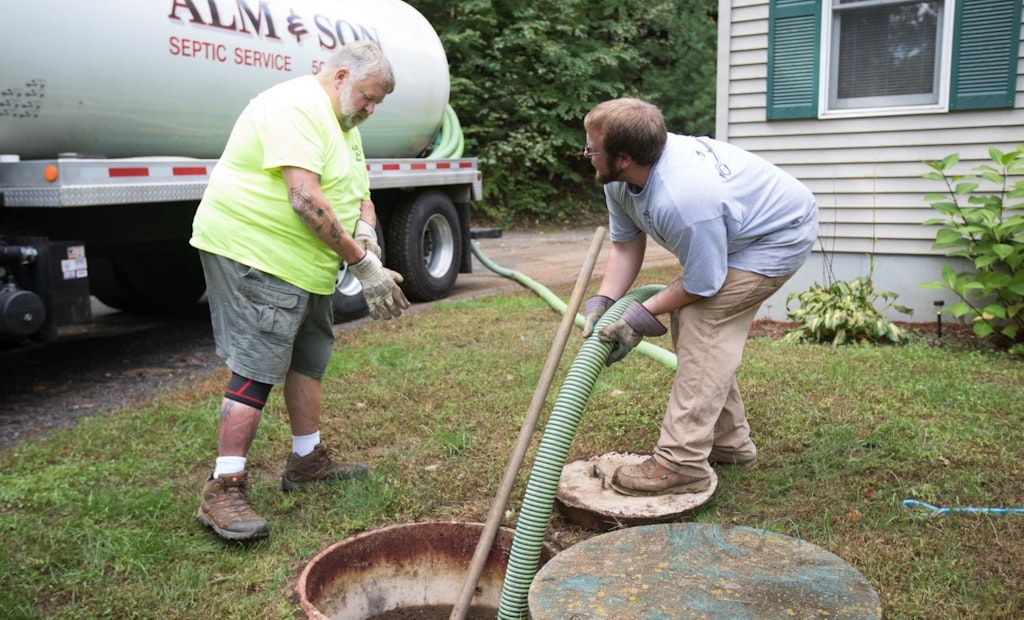Interested in Onsite Systems?
Get Onsite Systems articles, news and videos right in your inbox! Sign up now.
Onsite Systems + Get AlertsDiagnosing septic tank problems on some of the older properties in West Brookfield, Massachusetts, is tricky work. And anything that takes the guesswork out of the equation is like money in the bank for Karl Alm, owner of Alm & Son Septic Service.
One tool Alm uses often now but didn’t have when he started as a pumper 24 years ago is a camera for inspecting septic systems. He now uses a MyTana Mfg. MS11-NG2 unit with 200 feet of cable he bought during the 2016 WWETT Show. It’s a real timesaver, he says.
“It’s like a colonoscopy machine, but just a little bit bigger,” Alm says. “I use it two or three times a week.”
Alm says the camera system comes in handy when performing a Title 5 inspection, the evaluation of a private septic system that is required by the state of Massachusetts for a property transfer.
“You have to open up the septic tank, and you have to go out into the leachfield and find the distribution box,” Alm says. “This way, I send the camera out and it goes right to the D-box. I flip a switch and it sends out a little beacon, and it has a detector. I can walk right up to it, and I know where the D-box is. I push a button, and it tells me how deep it is. Then I can dig it up and look at it.”
The camera is especially useful for inspecting older homes with little or no system documentation.
“I can send the camera through the outlet and at least know what I’m looking for,” Alm says. “Things have changed over the course of the years. Some of them don’t have a distribution box and some do. With something that’s been buried for 35 years, it’s good to get a heads-up on what I’m looking for. You insert the camera into the outlet of the septic tank, and you can see which way the pipes go. You can measure how long they are since it’s got a footage counter on it. It’s a pretty intricate piece of equipment.”
The bottom line is an inspector can find what he needs to inspect a lot quicker by doing the camera inspection first.
“It saves me a lot of guesswork, and it saves a lot of useless holes,” he says. “When it’s 90 degrees F and you’re in someone’s backyard and the sun’s beating on you and it only takes you 20 minutes to find something instead of an hour and a half or two hours, it’s worth every cent you paid for it. You just save a lot of time.”






